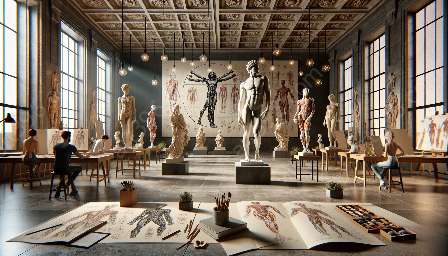Figure drawing is an essential aspect of art, reflecting the human form through various mediums and techniques. Its evolution has been influenced by social and technological changes, which have shaped the way artists depict the human figure over time.
Social and Cultural Influences
The evolution of figure drawing is intertwined with shifts in social and cultural perspectives. In ancient civilizations, representations of the human form often had religious or symbolic implications. Over time, societal attitudes towards the body and its representation changed, impacting the portrayal of figures in art. For example, during the Renaissance, there was a renewed interest in anatomical accuracy and humanist ideals, leading to a significant evolution in figure drawing techniques.
Technological Advancements
Technological advancements have also played a crucial role in the evolution of figure drawing. The development of new artistic tools and materials, such as graphite pencils, charcoal, and various types of paper, has allowed artists to explore different techniques and styles in figure drawing. Additionally, the advent of photography and digital art has influenced the way artists approach figure drawing, offering new perspectives and tools for capturing the human form.
Intersection with Figure Drawing Techniques
Figure drawing techniques have evolved in response to social and technological changes. Artists have continually adapted their approaches to reflect the shifting cultural perceptions of the human body. From the classical traditions of proportion and anatomy to the expressive freedom of modern and contemporary art, figure drawing techniques have continually evolved to represent the human figure in diverse and innovative ways.
Artistic Anatomy
Artistic anatomy, the study of the structure of the human body as it relates to art, has been deeply intertwined with the evolution of figure drawing. As societal attitudes towards the human body changed, so did the emphasis on anatomical accuracy in figure drawing. The study of artistic anatomy has provided artists with a deeper understanding of the human form, informing their techniques and approaches to figure drawing.
Conclusion
The evolution and adaptation of figure drawing in response to social and technological changes have been profound and multifaceted. From ancient civilizations to the digital age, artists have continually reimagined and reinvented the portrayal of the human figure, influenced by the societal context and technological advancements of their time.
Understanding this evolution is crucial for artists and art enthusiasts alike, as it offers insight into the rich history of figure drawing, the intersection with figure drawing techniques, and the enduring influence of artistic anatomy on the representation of the human form.

